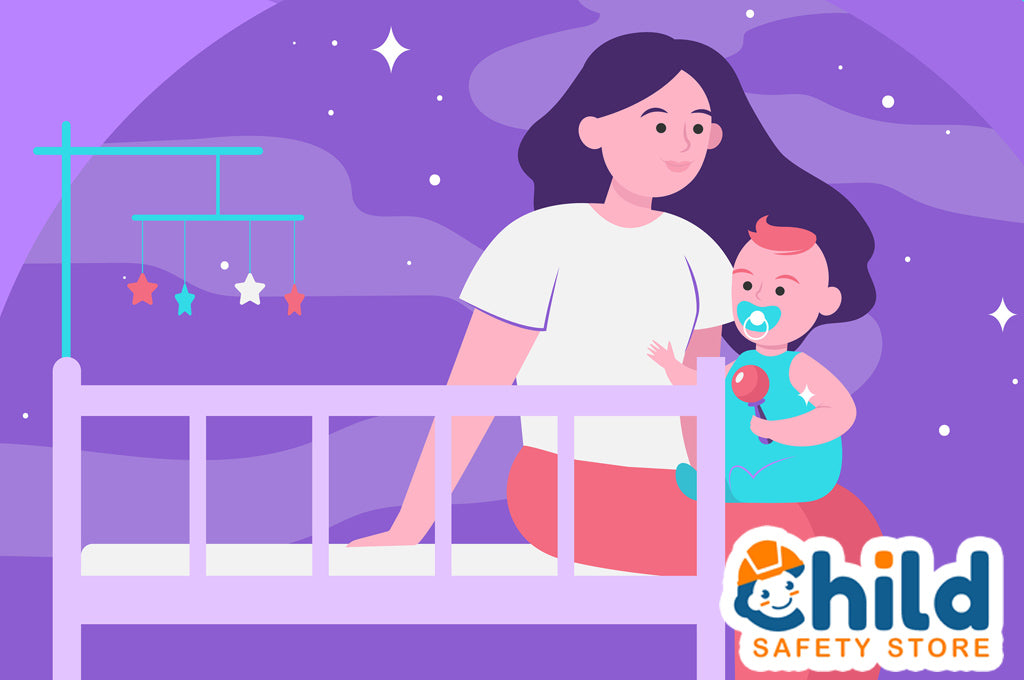
SIDS Awareness Month 2021
October brings the changing of leaves and Halloween. It also brings attention to a very important child safety concern. You see, October is SIDS Awareness Month 2021.
What is SIDS?
While often referred to simply as SIDS, the proper name is Sudden Infant Death Syndrome. According to Safe to Sleep, a program of the National Institute of Child Health and Human Development, SIDS is “the sudden, unexplained death of a baby younger than one year of age that doesn’t have a known cause even after a complete investigation.”
This syndrome is not caused by a crib, but is often associated with the safety of a baby’s sleep environment, such as the crib or bassinet. Sadly, SIDS deaths can occur any time in your baby’s first year of life. However, the majority of cases take place before the baby reaches six months.
Safe to Sleep’s SIDS Awareness Month 2021 Campaign
The Safe to Sleep program began in 1994 in an effort to reduce SIDS cases. In the five years following its launch, the number of cases declined by 50%. So, it’s safe to say that this program knows a thing or two about keeping our babies safe!
Today, let’s review Safe to Sleep’s four messaging “themes” for SIDS Awareness Month 2021.
-
Always place a baby on their back to sleep.
When a baby is sleeping on their back, it reduces the likelihood of its airways – the nose and mouth – being blocked and causing suffocation. If your little one is placed on their stomach, they will not have the physical strength required to correct their positioning in the event that their airway is blocked.
Sleeping on the back is the absolute safest way for a baby to sleep. This is true every time a little one is put down to sleep, even for naps.
-
Use a firm and flat mattress in a safety-approved crib, free of soft and loose bedding, such as bumpers, stuffed animals, and blankets.
It may seem uncomfortable to put them to sleep on a firm mattress with no blanket to snuggle with or stuffed animal to provide comfort. However, one of the very best things you can do for your baby’s safety is to make sure their sleep environment is free of these items.
These can all create suffocation risks. For more information on choosing a safe crib, read our dedicated blog posts about second-hand cribs and crib bumper pads.
-
Share your room with the baby. Keep your baby close to your bed but on a separate surface, such as in a crib or bassinet next to your bed.
Having your baby nearby is a great way to mitigate any potential risks of suffocation or SIDS related death. With that, it is recommended that you keep your baby in your room during its first year.
As a bonus, this practice is also a great way to bond. However, your baby should still have their own sleep space that is free of blankets, toys and the other items listed above. Most experts agree that it is not recommended for your baby to sleep in your bed with you.
-
Breastfeed to reduce the risk of SIDS.
For a multitude of reasons, not everyone chooses to, or can, breastfeed. And that’s okay.
However, if you are able to do so, this fact may be one to consider as you make your decision: studies have shown that breast fed babies are less likely to die of SIDS. This also applies to babies who are fed expressed breast milk.
When breastfeeding, it is important to be mindful of keeping the sleep environment safe for your little one. Feed them and then put them back in their crib or bassinet. If you think you may fall asleep while feeding the baby in bed, remove any soft materials from the area first. When you wake up, place the baby in its own sleep area.
Some other recommendations for reducing SIDS are to avoid smoking, drinking alcohol and illegal drug use during pregnancy. You should also see your child’s pediatrician regularly for wellness check-ups and to discuss any questions or concerns you have along the way.
